Our Wosnitzer Ancestors
The Wosnitzer family hails from Tarnow, Galicia. It appears that most of them were born, raised, and died there.
- Leibl Mordechai Wosnitzer married unknown and had a son named Isser, born in 1780.
- Isser married Chana and had a son Jochenen Wosnicer born on November 27, 1826.
- Channe Woznicer (b. 1782) died at about age 70 in Tarnow on March 19, 1852.
- Jochenen married Dobre (Hutner) and were Irving’s grand-parents. They had at least 11 children.
- To learn more about Jochenen and Dobre’s family, click on Jochene and Dobre under the Wosnitzer menu.
- To learn more about Irving’s parents, click on Tobias and Seri under the Wosnitzer menu.
- To learn more about Irving, click on the Irving menu under the Wosnitzer menu.
It seems that many of the Wosnitzers were in the hat industry.
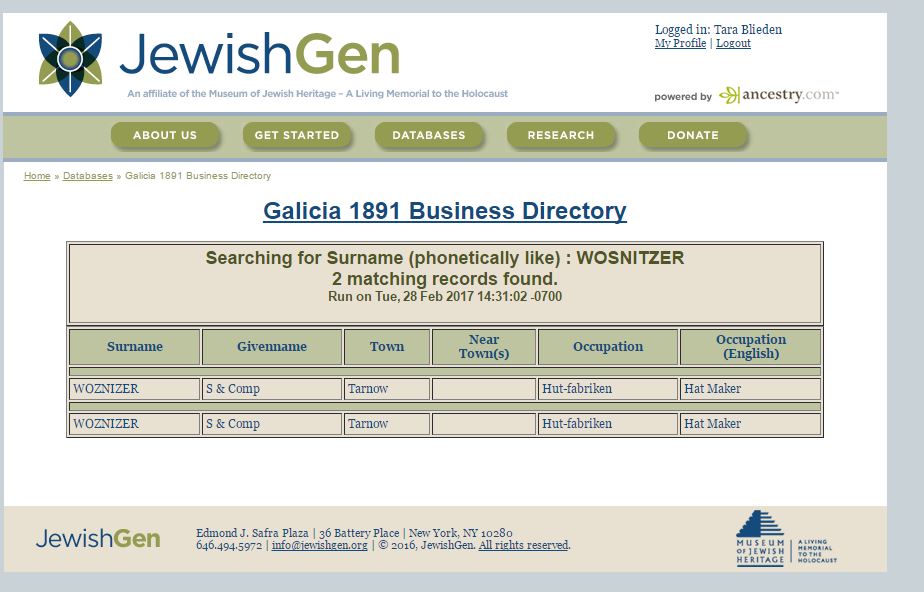
As with other surnames, in doing my research, I found many spellings of Wosnitzer, including: Wosnitzer, Woznitzer, Wosnicer, Woznicer, Wamnitzer, and even Momitzer.
What was life like in Tarnow when our ancestors lived there?
Tarnow, Galicia
Before WWI, Tarnow was part of the Austrian Empire. Today it is divided between southeastern Poland and western Ukraine.
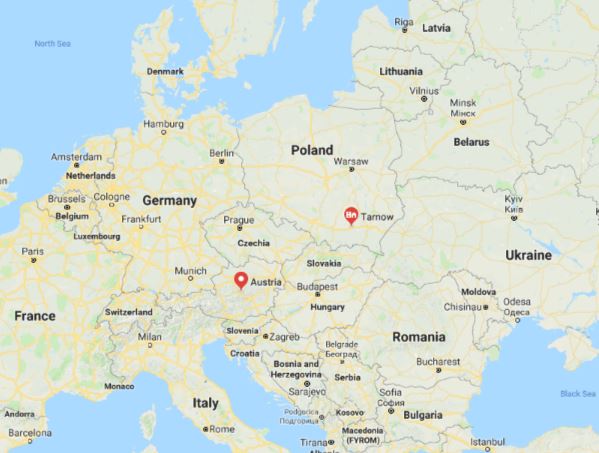
Before WWI, it was the major town in W. Galicia. It is located 47 miles east of Krakow and 45 miles west of Rzeszow. In 1900, the Jewish population was 12, 386. What was life like in Tarnow?
1581:
- Jews allowed to engage in trade in their own buildings and shops
- Jews allowed to distill and deal in alcoholic liquor
- Jews paid taxes to the magnates (owners of Tarnow
- Jews could own a cemetery near the city. They created one in 1583 on Sloneczna Street. Although devastated, it is still an active cemetery.
Middle 1600’s
- Fires caused damage and suffering
- Jews were allocated 25% to 30% of taxes paid by townspeople
- Except for religious officials, no new Jewish people could settle in Tarnow
- Jews were guaranteed a water supply from the city wells
1711:
- A fire destroyed all 23 buildings in the Jewish street as well as good in the Jewish shops. This was so bad, that the Jewish people did not have to pay a poll tax for 4 years.
1740:
- Jews could reside and construct buildings outside of their designated area
1772:
- Tarnow was annexed to Austria
1778:
- A Jewish school that had secular studies was built
1829, 1844:
- Blood libels against the Jews occurred but no one was punished
1842:
- A Jewish hospital was founded
1860:
- Rajzla Rubin started sewing Zeug trousers and jackets and sold them wholesale. She employed her sons and sons-in-law and developed a garment industry employing more than 3,000 people by WWII.
1890:
- The “Baron de Hirsch” foundation established a school in Tarnow
19th Century:
- The majority of the Jewish community was Hasidic although there were many different Orthodox groups, too.
- The Haskalah (Enlightenment) was spreading and Zionism was popular with the young people
20th Century:
- At beginning of this century, about 3000 Jewish people were employed in the growing cloth and hat industry.
- By WWI, the Jewish clothing industry had more than 60 companies including 32 tailoring companies, 5 women’s clothing, 10 hat making, 7 lingerie, 3 corsetry. The Wosnitzers had at least 2 of those companies.
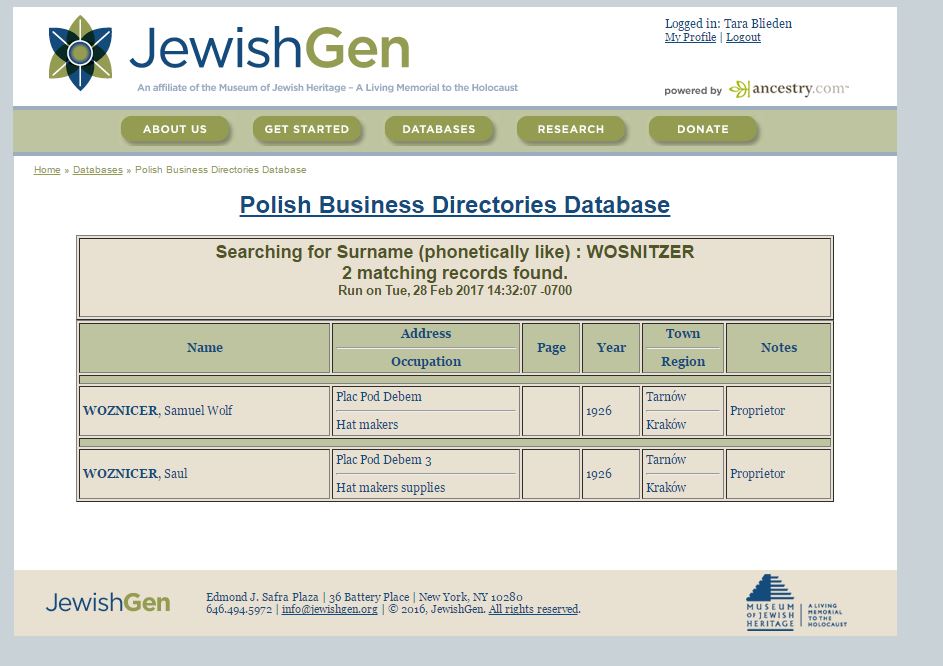
WWII:
Tarnow had the biggest Jewish population in the region called Galicia. Almost all were murdered by the Germans by being shot on site or sent to the gas chambers in Bełżec and Auschwitz-Birkenau. Those murdered included many from our Wosnitzer family (See the Tobias and Seri section). Today, there are memorials to the victims.
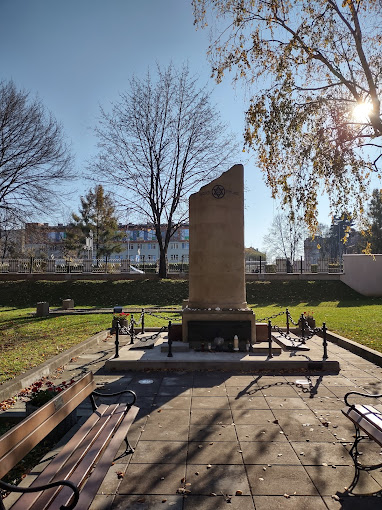
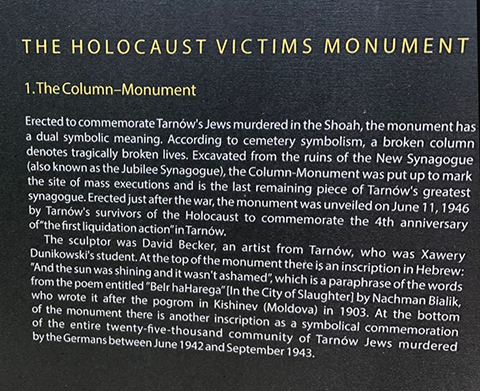
JewishGen.org Press in early 2024 published a book about the destruction of Tarnow during WWI: 𝐓𝐚𝐫𝐧𝐨𝐰: 𝐓𝐡𝐞 𝐋𝐢𝐟𝐞 𝐚𝐧𝐝 𝐃𝐞𝐬𝐭𝐫𝐮𝐜𝐭𝐢𝐨𝐧 𝐨𝐟 𝐚 𝐉𝐞𝐰𝐢𝐬𝐡 𝐂𝐢𝐭𝐲, 𝐕𝐨𝐥𝐮𝐦𝐞 𝐈𝐈 (Tarnów, Poland).
Sources for this section:
- https://www.jewishgen.org/Communities/Community.php?usbgn=-532666
- https://search.geshergalicia.org/
- https://www.geni.com/projects/Jewish-Families-of-Tarnow-Poland/15744
- https://jguideeurope.org/en/region/poland/galicia/tarnow/https://jewishtarnow.blogspot.com/2016/04/mezuzah-place-for-tarnow-shtetl.html
- https://www.memorialmuseums.org/eng/denkmaeler/view/1532/Memorial-to-the-murdered-Jews-of-Tarn%C3%B3w
